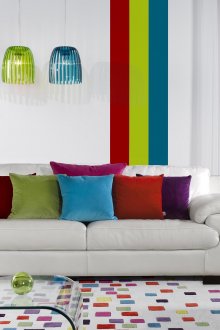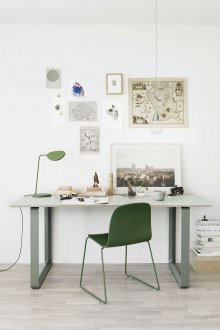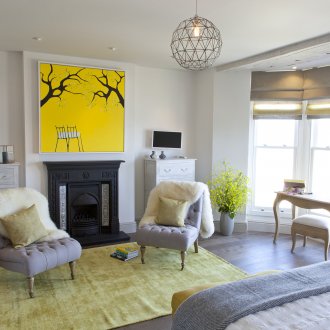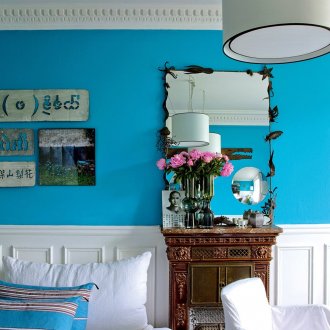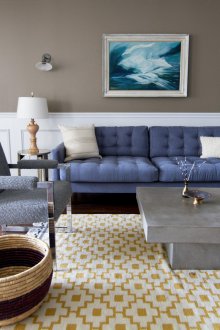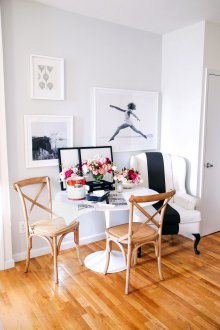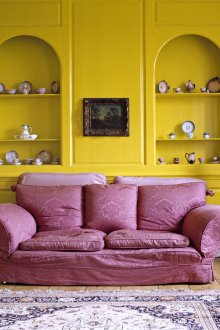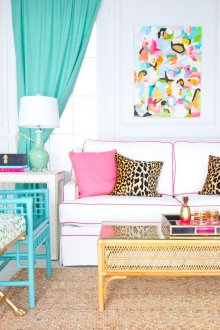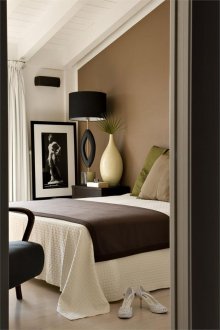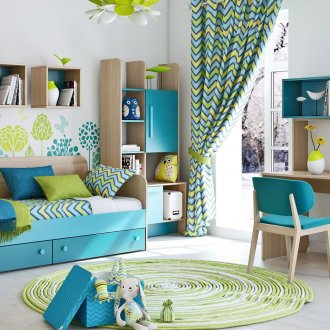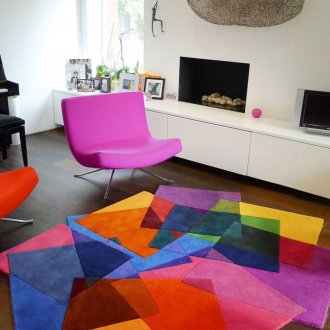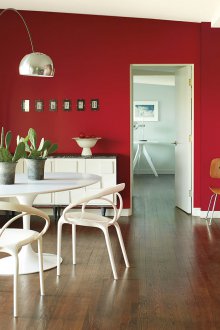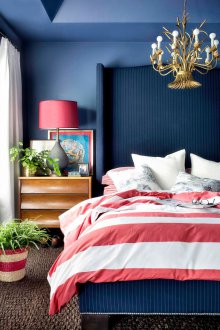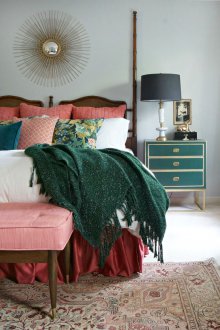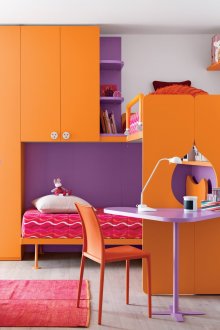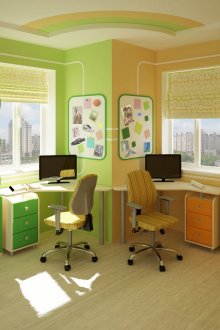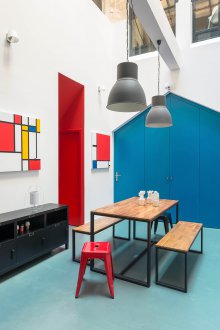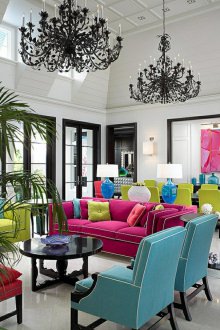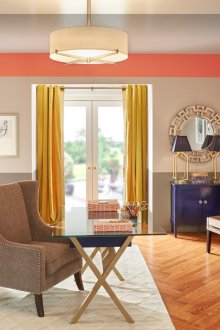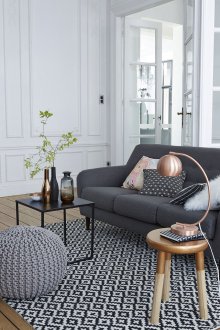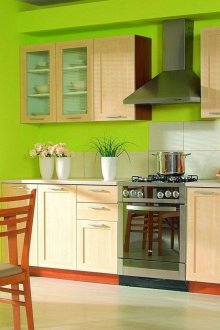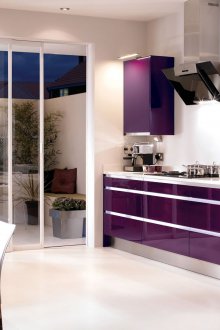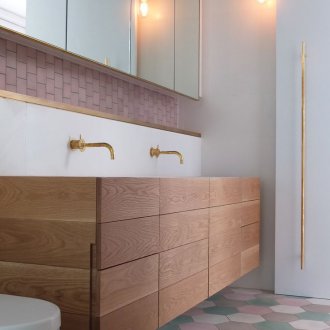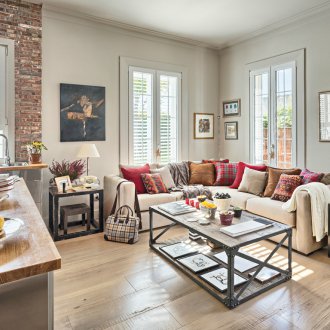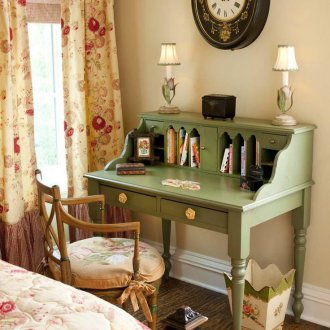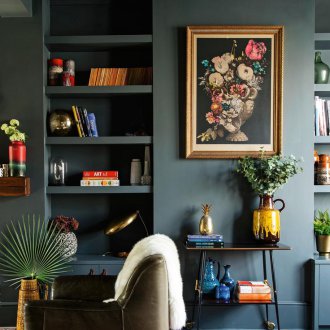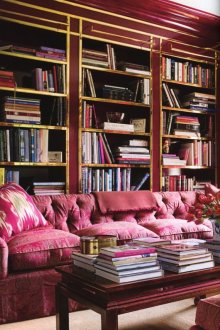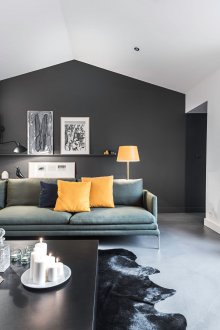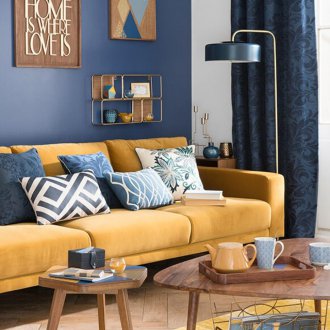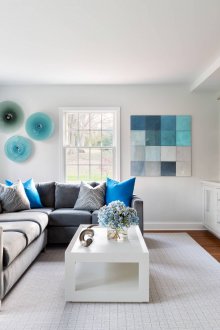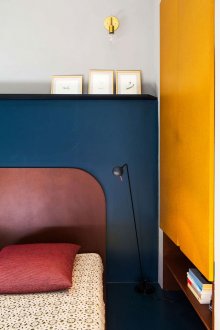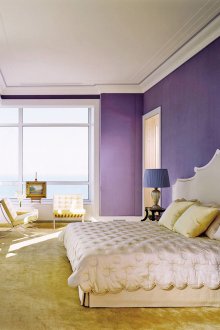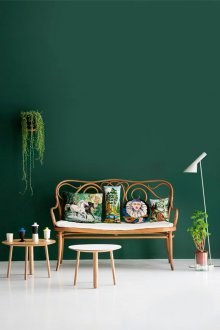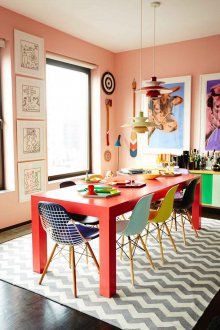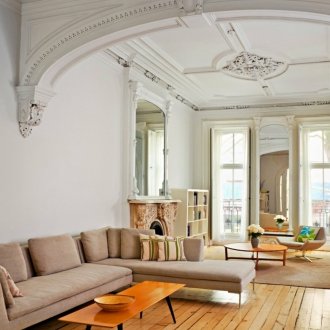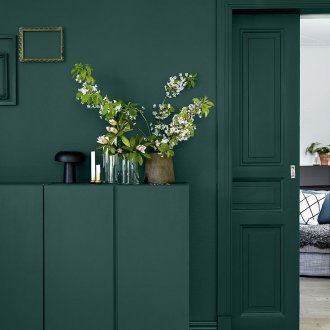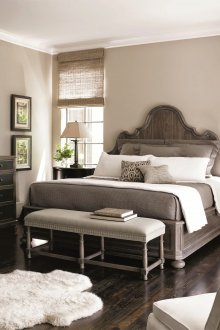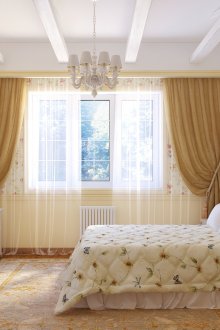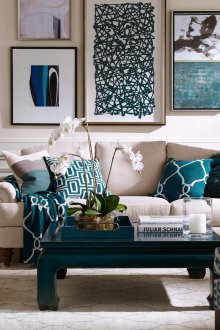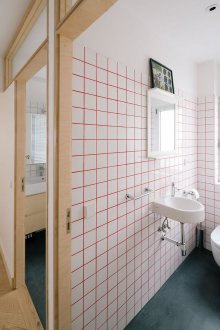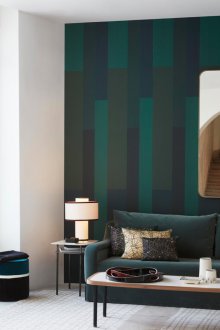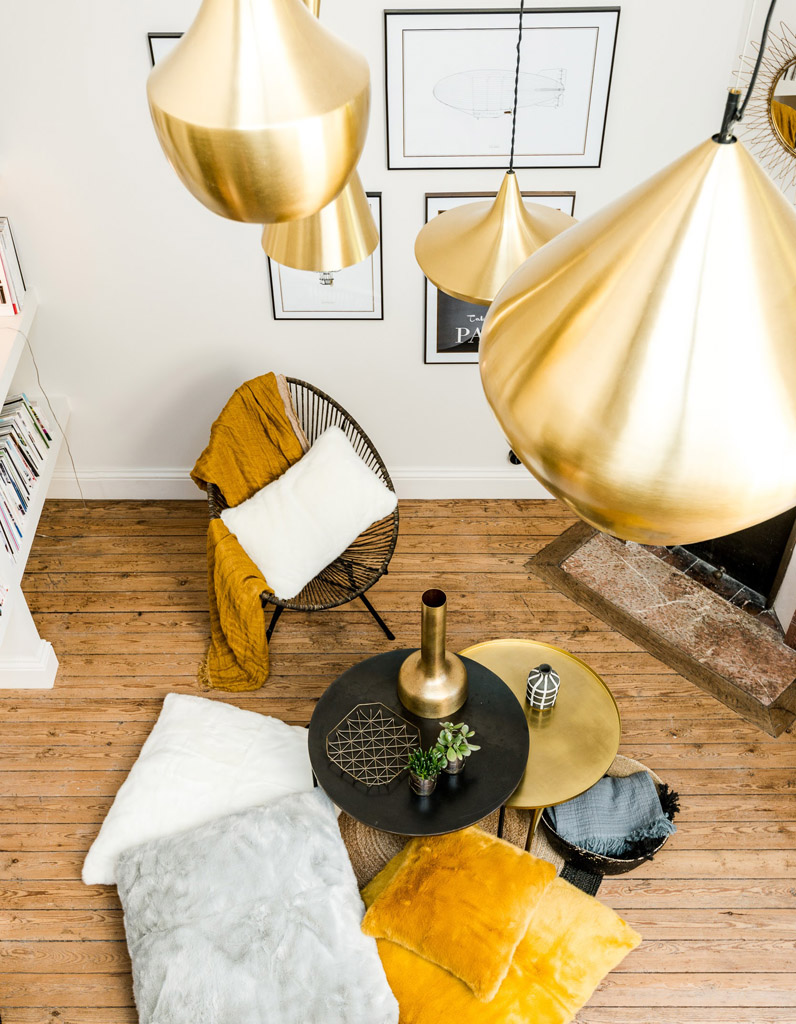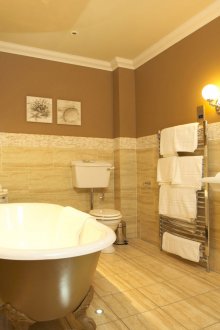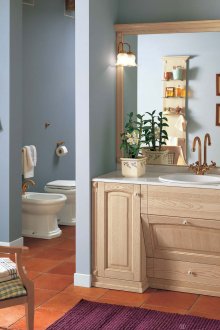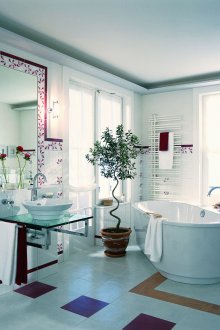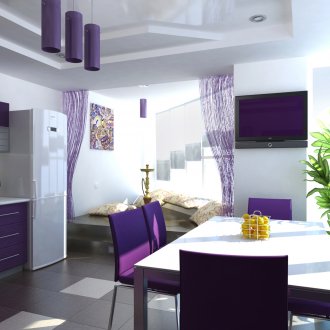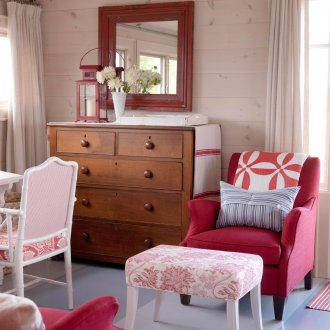The combination of colors in the interior (57 photos): successful and beautiful options
Content
The color scheme plays an important role in the interior of any room. Scientists are sure that the colors and shades that surround us affect not only the mood and emotional state of a person, but also change their physical well-being. In any case, the favorable atmosphere and beautiful design are pleasing to the eye and create a cozy atmosphere.
When choosing a color scheme at home, it is important to be guided by your own taste, while paying attention to the laws of color and harmony. There are a number of rules developed by designers that determine the right combination of colors. With their help, you can create any atmosphere in any room with the help of different proportions and shades.
General rules for combining colors in the interior
General rules regarding the arrangement of colors. There are warm, neutral and cold shades. However, with different applications, any color can play a role, with the exception of always warm orange and forever cool blue. Therefore, use these colors carefully.
Basic principles for using colors:
- For a large room, it is better to choose warm shades. This will give the room coziness and add light.
- To visually enlarge the room you need to use a cold palette of light colors. Light colors almost always increase space.
- The use of contrast will make the room more comfortable. It is necessary to choose one leading color (bright or calm does not matter) and make several accents in a different key. You can use the Itten color wheel for this.
- A game of contrasts is useful to create a good atmosphere. All primary colors are opposite. Their correct combination is always very successful. So for red you can choose green, or yellow - lilac.
- Avoid combining shades of dark warm to cold dark. Or vice versa - dark cold and light warm. For example, yellow is light and blue is cold. Their combination can adversely affect the human condition.
Finding the right color often leads designers to nature. It is the flora and fauna that are considered the first inspiration for the design of residential premises, where every detail must be combined with the general atmosphere: curtains, furniture and accessories are the main contrast to the walls. A successful combination based on natural shades (order, a reflection of the sun in water, foliage) is only the first step, it is important to find such a ratio of colors that will be relevant for each particular room. Usually this is a combination of 50x40x10, where the main color takes up the majority, combining less, and very little for accents.
Children
For the design of the room where the child lives, it is better to choose warm and calm tones. Ideal is yellow, which is able to develop creativity and creativity. Soft red will set the child up for activity and mobility, but can affect sleep.
Pink in the bedroom for the girl allows you to create a pleasant children's atmosphere of tenderness and innocence. It is good in combination with brown, burgundy and notes of gray. It is undesirable to mix with yellow, black and orange.
Blue in a bedroom for a boy can make a room cold, but diluted with white this color becomes quite attractive. You can also use red and gray elements. Cannot be complemented with green and brown.
To create a bright room for a child, one should choose cheerful colors: azure, yellow, green. However, such colors look very catchy, so in such a palette you can arrange one of the zones of the room, for example, an active corner with a children's version of the Swedish wall or a desk so that the child does not get bored with studying. The rest of the colors should be neutral (ceiling, walls, doors), against their background a brightly decorated functional area will attract a child.
Kitchen
The combination of colors in the interior of the kitchen is best done contributing to a good mood and causing appetite. It is always green, yellow, orange and beige. The main thing is that the shades are not too juicy - this can, on the contrary, impair digestion. It is better to dilute colors with blue, red.
The brown color in the design of the kitchen will look great with droplets of golden, beige and gray. This color is bad with burgundy, lilac and chestnut. Some believe that this color is depressing, but a competent brown combination of colors in the interior of the kitchen will make it possible to make it more stylish and sophisticated.
An unusual option for the kitchen may be a combination of green in the interior or cream. Natural shades of trees, stones and leaves will give a feeling of freshness and vigor. Most should be made in the main color (60% of the room). The color of the rug, lighting and utensils takes on the accent. Yellow is great. The color of the doors should be as natural as possible.
Living room
The place for rest and reception should be decorated with “comfortable” colors. The combination of colors in the interior of the living room should not be too bright or dark, it only intensifies the atmosphere. It is best to use neutral tones, that is, any color in a very soft performance. If you still want brightness, you can focus on expressive small details (colored pillows, etc.).
Green in this case will play the role of a relaxing and calming. It is combined with red and yellow. Bad with gray, blue and shades of purple. You can add a few accents of black in the form of sofa cushions and saturated doors.
Red in the interior of the living room is able to cheer up, activates creativity and does not allow to relax. Suitable for people who like to play games and take big companies. Used with blue, gray, yellow and black. Incompatible with purple, chestnut and brown.
Blue lovers can create a winter night atmosphere in their living room. The combination of blue with crystal white will present a real fairy tale, and flickering elements (crystal vase, glass sconces) will make the illusion of stars. So blue can be used in furniture, on walls and in curtains. The ceiling, doors and large accessories in this case should be white. The contrast in this case is created by golden elements, for example, pillows.
Bedroom
The personal space of the bedroom is the best place to fulfill your desires and preferences. The main thing is to choose colors that will make it easy to fall asleep and relax. Most often, the combination of colors in the interior of the bedroom involves the use of pastel colors, but lovers of red or blue to make the bedroom in their own color is not prohibited. If you feel calm in an atmosphere of black or any other color, feel free to combine it in the design of your bedroom.
Yellow in the bedroom gives a feeling of sunshine. Acceptable in combination with black, green, brown. Better not to use paired with blue, pink and burgundy. Also, the walls in the bedroom can be painted in coral color. Lighting, perhaps a plaid on the armchair and paintings are better to choose orange. All this can be diluted with white or black photo frames, carpets and curtains. The color of the doors should be saturated.
A combination of lilac in the bedroom interior proved to be very successful.It requires the addition of light purple, chestnut or gray, rejects red, yellow, black and brown. Adds mystery and a certain mystery to the interior. Purple in the bedroom allows you to calm down and relax. This color associates harmony and peace of mind. Ideal in combination with golden, yellow, orange and light green, but not acceptable with rich brown or green, gray, red.
To create a romantic atmosphere, a combination of gray and pink is suitable. The background is made of light gray shades and pink elements (curtains, upholstery, tablecloth), interspersed with fuchsia on pillows, ceramics and small details. This complex is always winning and beautiful. Also in the bedroom look good mint, caramel, cream and strawberry tones. The combination of beige in the bedroom interior has been very relevant for many years.
Bathroom
In a room where purity reigns, it is preferable to use white with notes of blue. In general, white can be combined with any color. This color is universal, it gives a person a sense of superiority and elegance, but can make a room cold.
If you use a combination of gray in the interior of the bathroom, it must be diluted with pink, brown, black, lilac or yellow. Categorically unacceptable green and orange. Some people think that gray makes the room look discouraged, but the right accents can make a difference in your bathroom.
The blue color in the design of the bathroom adds coolness. Blotches of blue and white will be useful (a great option in the form of white doors and the bath itself). The use of golden shades, burgundy is excluded.
Here are some combinations that can be successfully used in the design of any living room (basic, combining and accenting colors):
- Cobalt Blue + Blue Green, Light Green + Gray
- Azure + Persian Blue, Light Green + Pear
- Turquoise + light gray, pink + light cherry
- Pale cornflower blue + silver, cream + white
- Yellow + Pale Brick, Pale Mauve + Chocolate
- Mustard yellow + red-coral, dark turquoise + lilac
- Mustard + Olive, Light Beige + Light Brown
- Linen + Khaki, Gray Blue + Old Gold
- Eggplant red + wisteria, blue-gray + blue dust
- Fuchsia + Magenta, Red + Blue Steel
- Peach + peach yellow, pale mauve + dark brown
- Pale pink + pale sand, mint green + dark gray
- Jade + pale cornflower blue, gold + deep azure
- Lime + emerald, fuchsia + cream
- Gray green + sky blue, light amethyst + purple
- Pistachio + pear, khaki + light beige
- Orange + Cherry, Gray + Dark Chocolate
- Coral + Purple, Mint Green + Cream
- Salmon + rose quartz, pale mauve + carrot red
- Pale apricot + blue-gray, this blue + old gold
- Red + Blue, Thistle + Yellow Peach
- Carmine red + orange, cocoa + brown
- Raspberry + aubergine, gray slate + folate red
- Cherry + red, blue-gray + fuchsia
